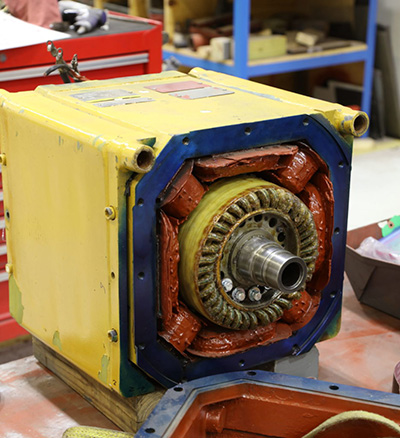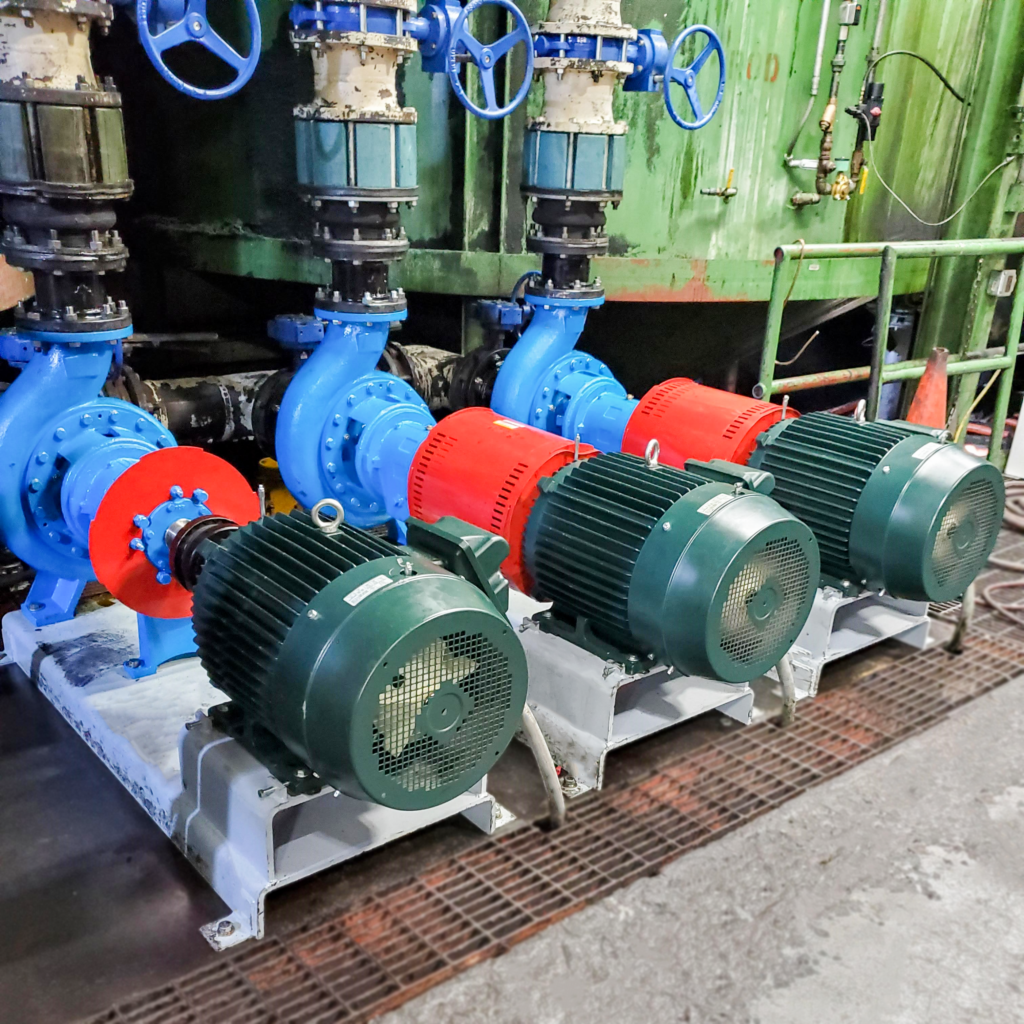By Kevin Bachhofer & Mike Switzer, Operations Manager & Product Line Manager
The following article was previously published by Utilities Tech Outlook. Read the original article here.
Electric motor owners often ask how long their motors will last under current conditions. Exact timelines can’t be determined, but identifying the most common, avoidable electric motor issues, we can prevent premature failures. Adhering to proper maintenance practices can extend run life and help prevent unwanted failures, be it electrical or mechanical. Let’s review these common issues and discuss how to prevent them from becoming a problem for your business.
Electrical Motor Issues
Common electrical issues in motors often involve multiple factors like poor connections, overload conditions, phase imbalance, and incorrect voltages. Ensureing that the motor has proper connection electrically by torquing lead connections to the proper specification is extremely important. This prevents the creation of a high resistance connection, which is a hazard. Consequently HRCs can cause enough heat to start a fire that could damage more than your motor.
Overload & Heating
Other electric motor issues, such as an overload condition and heating, can be prevented by applying the correct horsepower and torque requirements to the motor based on the nameplate ratings. Limit how often the motor is started before the recommended cooldown time to prevent damage. Excessive or frequent starts will create heating in the stator iron core, which will lessen the insulation life of the motor’s coils. This issue often arises on motors powered in what is commonly referred to as “across the line” starting condition where full voltage is applied to the motor at the instance of startup. A soft start or a VFD would eliminate the potential damage caused by the initial surge for across the line starts.
Phase Imbalance
Imbalance (under voltage or over voltage) on the phases is also a detrimental electric motor issue, causing higher than normal current in the motor. You can program motor circuits with VFDs to watch for and shut down in the event fluctuations or imbalances occur. In reference to a VFD application, it should be noted that the VFD should have some type of induction absorption or output filter between the component to the motor. A VFD without filtering can produce circulating currents from bearing to motor shaft, which will shorten the life of the bearing. Several motor manufacturers add grounding rings to their motors along with insulated bearings to stop the circulating currents that unfiltered VFDs may cause, which could lead to a motor failure.

Mechanical Motor Issues
Mechanical failures are all too common with anything that has physical movement. Avoiding premature failure can give a motor a long life. Lubrication is one of the most important procedures to be consider when trying to avoid motor related issues. The manufacturers’ factory will lubricate a motor’s ball bearings, but this does not mean that the lubrication lasts for the life of the motor. It is vital to maintain recommended lubrication to avoid bearing failures. The same reasoning applies to sleeve style bearings and rolling style bearings. Periodic oil changes for a sleeve/rolling element bearing can increase the life of the bearings.
Keeping the motor aligned will also have a profound effect on how long the bearings last. Proper alignment varies widely between installations as the motor is set and grows to a thermal position at which time you achieve the alignment you desire. A good alignment is necessary for a motor to successfully operate up to and beyond its intended life cycle. As a part of your annual checks, be sure to confirm the motor’s alignment and test vibration.
Vibration can be detrimental to bearings and create bearing fatigue. Sometimes, this can be the first indication that something is wrong internally. Within the motor itself, make sure the bearing fit tolerances and all seal areas are correct. Excessively loose bearing fits can cause vibration in the motor and begin to wear other tolerances on the motor, such as seal clearances causing leaks, premature failure, and costly repairs. Conversely, tight bearing fits can reduce oil clearances, increase heating, wipe out bearings, and even result in shaft damage. Annual bearing inspections can detect changes and signs of wear that may go unnoticed until it is too late.
Heating & Cooling Motor Issues
A totally enclosed fan-cooled (TEFC) motor is dependent on the airflow of an external fan to cool the outside frame of the motor. The cooling of the inside air happens through heat transfer. Keeping the vents clear of dirt and debris will allow the motor to cool as intended. Routine inspection of fan blades will ensure the motor air flow remains at or near factory recommendations.
Large Motor Filters
Larger motors have top hats or hoods. These hoods typically have provisions for some type of air filtration. These applications use varying sizes of filters and the meshes are typically of aluminum or stainless-steel material. Either type allows the user to extract, clean, and re-install to help the motor breathe and keep cool. If a motor does not have filters, it can draw in the surrounding dust and debris. This will accumulate inside the motor and create heat within the motor by encapsulating the windings and plugging stator vents. The heat in the stator will become trapped with no way to dissipate, in turn leading to dirt buildup inside the rotor creating a vibration issue. Simple, routine maintenance and cleaning of the filters avoids nearly all these potential electric motor issues.

Installation Configuration
The last common avoidable electric motor issue happens when you place motors too close together in their respective applications or install the motor in an enclosed and hot environment. Motors installed like this can pull in hot air versus cooler, ambient air if placed in a configuration that allows a motor to intake the exhaust of a motor in proximity. This will alarm or trip the monitor device and cause unwanted shutdowns and unnecessary restarts on equipment. Site planning and additional ventilation for nearby motors can prevent this issue from happening.
Keep your motors running as efficiently as possible allows your business to focus on other areas that need attention. At Southwest Electric Co, our in-house repairs will start you in the right direction. Our company offers turnkey installation services and maintenance plans to help your assets run longer and more efficiently. Give us a call to discuss your facility and electric motor issues, and we will customize a plan that will improve the lifespan of your equipment.
Give us a call, email, or request a quote using the button below to get in touch with us today.
More about motors on our Youtube channel!
What is the Difference Between a Form Coil and a Mush? (youtube.com)
What is the VPI Process in a 3-Phase Motor? (youtube.com)